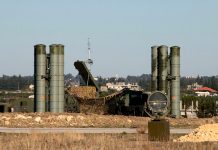
On June 24, 2025, the U.S. Missile Defense Agency (MDA) reported a significant advancement in national security: the Long-Range Discrimination Radar (LRDR) successfully tracked a simulated intercontinental ballistic missile (ICBM) during a live test. This achievement marks a pivotal moment for the “Golden Dome” missile defense initiative, championed by former President Donald Trump, aimed at fortifying the nation against long-range missile attacks.
LRDR represents a state-of-the-art radar system engineered to detect and monitor ICBMs across vast distances, significantly enhancing homeland defense capabilities. After prolonged development setbacks, this test marks a critical step toward formal approval and operational deployment by the U.S. Space Force. The radar’s demonstrated performance addresses escalating global missile threats and strengthens confidence among both American citizens and allied nations.
Defense analysts see this milestone as a clear indication of the United States’ continued commitment to technological advancement in countering high-level threats. Integrated with existing defense architectures, LRDR is poised to reinforce national security and influence ongoing discussions around missile defense strategy.
As a central component of the “Golden Dome,” LRDR showcases the results of extensive research and investment, reflecting a strategic balance between innovation and real-world deployment. Its success is being closely watched by both public stakeholders and security experts alike.
Technical Overview of LRDR
The LRDR utilizes advanced phased-array radar technology, which allows it to electronically steer its radar beams across thousands of miles. Unlike conventional radars, LRDR’s antenna grid facilitates rapid scanning over expansive areas and excels at identifying actual warheads among decoys—a crucial function when dealing with complex missile threats.
In the June 2025 test, the radar effectively followed a target emulating an ICBM under operational conditions, proving its capability in real-time threat evaluation. Its high-resolution imaging feeds critical data into systems like Ground-based Midcourse Defense (GMD), enhancing overall missile interception accuracy. With a range that exceeds many current systems, LRDR can cover areas previously beyond reach and process large data sets quickly to reduce response time.
Its seamless integration with command and control networks ensures synchronized operations across various military branches. The successful test underscores LRDR’s role as a cornerstone in long-range missile defense, reinforcing protection for both civilians and strategic assets amid evolving threats.
International Radar Comparisons
Several countries have developed radar systems comparable to LRDR, though few rival its capabilities. For example:
- The Netherlands’ SMART-L radar, widely used in NATO operations, detects ballistic threats up to 2,000 miles and performs well in maritime scenarios. However, its ICBM-tracking ability remains unverified in public data.
- Israel’s EL/M-2080 Green Pine, a key part of the Arrow system, is proven in regional defense but has a shorter range of around 600 miles and is not designed for ICBM threats.
- Japan’s J/FPS-5 radar monitors North Korea with a range of 1,200 miles, but lacks confirmed ICBM interception capabilities.
- India’s Swordfish radar supports its missile defense framework with a 900-mile range, but has only shown partial success in intercepting shorter-range threats.
In contrast, LRDR offers longer detection range and superior target discrimination. While other systems serve regional defense roles, LRDR is purpose-built to engage threats on a global scale and is tightly integrated with U.S. defense infrastructure, setting it apart on the world stage.
How LRDR Enhances Current U.S. Missile Tracking Systems
The U.S. missile defense network already includes several tracking systems, each with unique strengths:
- The AN/TPY-2 radar, part of the THAAD system, covers up to 1,800 miles and is optimized for terminal-phase interception, but is less suited for early ICBM detection.
- Aegis SPY-1 radars on Navy vessels are effective for medium-range threats (up to 600 miles), but lack the resolution and range required for ICBMs.
- The Sea-Based X-Band Radar (SBX) used in the GMD program can track long-range missiles but struggles with warhead discrimination over extended distances.
With a reach of approximately 2,500 miles and advanced ability to differentiate between decoys and real threats, LRDR fills critical gaps left by these systems. Its fixed location ensures uninterrupted surveillance, unlike mobile systems, and its integration with GMD and Aegis boosts coordinated defense capabilities. This positions LRDR as a key element in defending against far-reaching missile attacks.
Comparative Overview: Russia and China
Russia’s Voronezh radar network, operational since 2009, offers extensive ICBM tracking capabilities up to 3,700 miles and spans multiple locations. However, open-source evaluations suggest it falls short in effectively discriminating warheads from decoys.
China’s YLC-8B radar, introduced in 2018, reportedly covers up to 1,800 miles and performs well against medium-range missiles. Yet, there is limited evidence of successful ICBM tracking or integration with missile interceptors.
Both nations focus more on early detection than on advanced discrimination. LRDR’s ability to analyze and relay real-time, detailed information gives the U.S. a tactical edge, especially in intercepting complex threats. While Russian and Chinese systems offer broad coverage, they lag in rapid data processing and precision, key areas where LRDR excels.
Overcoming Challenges: LRDR’s Development Journey
Development of the LRDR began over ten years ago in response to increasing concerns about long-range missile threats. Initial cost projections of $1.5 billion swelled to $2.3 billion by 2020 due to technological obstacles, including antenna tuning issues and complex software requirements. Construction in Alaska’s challenging climate added further delays.
Despite these difficulties, the Missile Defense Agency, with Lockheed Martin, made steady progress through persistent testing and system refinements. A major software overhaul in 2023 enhanced data handling. The involvement of the Space Force ensured smoother integration with broader defense strategies. Heightened political urgency around threats from countries like North Korea accelerated timelines. The June 2025 test marked a breakthrough in this long development arc.
This success underscores the value of long-term investment and coordination across engineering, military, and political sectors. For the public, it restores trust in high-cost defense programs. For strategists, it proves that complex goals can be met under pressure.
LRDR’s Role in the “Golden Dome” Strategy
The “Golden Dome” concept envisions a layered defense system to guard the U.S. against missile attacks. LRDR plays a foundational role by providing long-range tracking data to interceptor platforms. Based in Alaska, the radar covers vital areas across the Pacific—a region critical for detecting launches from countries like North Korea.
LRDR’s ability to transmit accurate, real-time data to GMD interceptors greatly enhances the chances of successful interception. Planned upgrades may further improve its range and ability to handle decoys. In the face of growing missile capabilities among adversaries, such developments are increasingly essential.
The radar’s demonstrated performance helps advance the overall “Golden Dome” initiative, possibly accelerating deployment schedules and reducing future defense costs. Its contribution strengthens both national readiness and strategic deterrence.
Looking Ahead: Operational Status and Broader Impact
Following the successful test in June 2025, the Missile Defense Agency is reviewing performance metrics such as tracking fidelity, signal clarity, and reliability. Pending final validation, LRDR is expected to receive full operational clearance from the Space Force later in the year.
Once approved, LRDR will be fully integrated into the national missile defense framework. Its deployment reinforces deterrence, signaling to potential adversaries that the U.S. is equipped to respond to long-range missile threats. It also boosts confidence among allies, particularly in Europe and the Asia-Pacific region.
However, challenges remain. Ongoing maintenance, system updates, and budget considerations will need to be managed. Public support depends on clear communication about the radar’s value and role in national security. Defense experts see LRDR’s integration as a major leap in cohesive missile defense, but its long-term success hinges on sustained funding and collaboration with international partners.





